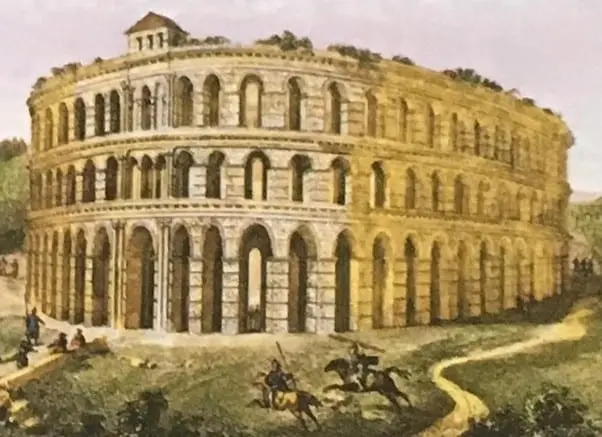While many visitors are drawn to Bordeaux, the wine capital of the world, few realize they’re walking above the remains of what was once one of the Roman Empire’s most prosperous cities. The famous city was in fact known as Burdigala during the Roman era. Today we’ll see how Bordeaux transformed from a modest Celtic settlement into the thriving Mediterranean metropolis we now know. We’ll explore the extraordinary Roman legacy and remains, and uncover the hidden historical treasures behind the prestigious vineyards and elegant architecture of modern Bordeaux.
What was the original name of Bordeaux?
Long before becoming the renowned wine capital of the world, Bordeaux was a modest Celtic settlement known as Burdigala. The name “Burdigala” itself carries the complexity of its origins. Some think the name is a combination of burd (marsh) and gala (shelter). Others believe it means Gallic village (burgo galatico). The name then gradually changed, becoming Bordale in Basque, Bordeù in Gascon, and finally Bordeaux as we know it today.
Established around 300 BCE by the Bituriges Vivisques, a powerful Gaulish tribe, this small village was strategically located along the crescent-shaped bend of the Garonne River, often referred to as the “Port of the Moon.” The area consisted of fishermen’s huts and reed-covered homes made of wood and clay, surrounded by dense forests and swamps. The Bituriges Vivisques were engaged in trade and cultural exchanges with Greek merchants, and quickly adopted their culture, their writing systems, their divinities, their industrial processes, and learned how to cultivate vines.
In 56 BC, Publius Crassus, Caesar’s lieutenant, conquered the territory, which then became Roman. Burdigala flourished under Roman rule, becoming a major port and a cultural center. The population grew significantly, and the city became the administrative and economic center of the Roman province of Aquitania Secunda. The town quickly became a crucial crossing point for the tin trade with Brittany and a commercial hub between the Atlantic and the Mediterranean.
What is the best kept secret in roman Bordeaux?
The Romans built remarkable infrastructure in Burdigala, transforming the small fishing village into a major city not to be missed. Bordeaux once had Roman baths on Rue des Frères-Bonie, an aqueduct system now buried, or massive defensive walls, built in the late third century, which mostly disappeared, with only fragments hidden within private buildings. The Piliers de Tutelle, a grand colonnade that once stood at the heart of the Roman forum, was demolished in 1677. The once-bustling port of Burdigala has left no visible trace, and the Mithraeum, a sanctuary dedicated to Mithras, remains inaccessible beneath modern structures. You can learn more about these infrastructures and see reconstructions during guided city tours.
Only two places remain and can still be visited today:
The Palais Gallien, a second-century amphitheatre that once held 22,000 spectators for gladiatorial combat and public spectacles. It’s the only Roman monument still standing, although only portions of its arches and walls remain. The exterior is freely accessible year-round, while the interior can only be visited with a guided tour.
The Musée d’Aquitaine houses a vast collection of artifacts, including pottery, mosaics, and sculptures, along with virtual reconstructions of lost monuments from the Gallo-Roman era. Admission is 5 euros, but free every 1st Sunday of the month.
How has Latin shaped modern French, especially in Bordeaux?
Following the Roman conquest, Latin gradually replaced the native Gaulish language, laying the foundation for modern French. This process of Romanization extended beyond language, as Roman governance, law, and education solidified Latin as the official tongue. The administrative system required its use in legal and political matters, while Roman schools and cultural institutions reinforced its dominance. Over centuries, Latin absorbed local influences and evolved, giving rise to the dialects that would later form Old French. Many common French words trace their roots back to Latin, particularly in areas essential to Roman daily life.
Many domains closely linked to Bordeaux’s heritage, like viticulture, architecture, and maritime trade, derive from Latin. For example:
vinum → vin
vindemia → vendange
botellum → bouteille
porta → porte
fenestra → fenêtre
camera → chambre
portus → port
mercatus → marché
navis → navire
There are even local city names that come from Latin, like Pessac, which originates from Paciacum, once a Roman villa; Gradignan, which traces back to Gratinianus, a Roman landowner; or Caudéran, now a Bordeaux neighborhood, which comes from Calderium, meaning hot springs.
Burdigala may have vanished from the maps, but not from the streets of Bordeaux. Its amphitheatre still echoes a time when this city was a vibrant Roman outpost, open to trade, ideas, and languages. To explore Burdigala is to discover how history lives on in the words we speak, the places we walk, and the stories we share.
Looking to experience Bordeaux like a local and practice your French? The Palais Gallien and the Musée d’Aquitaine are perfect spots to wander, wonder… and maybe even pick up a few new French words along the way. After all, history sounds even better en français.
Want to explore the Roman roots of Bordeaux while learning French in the heart of the city? Discover our French lessons for newcomers and dive into history and language at once!




